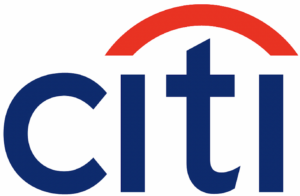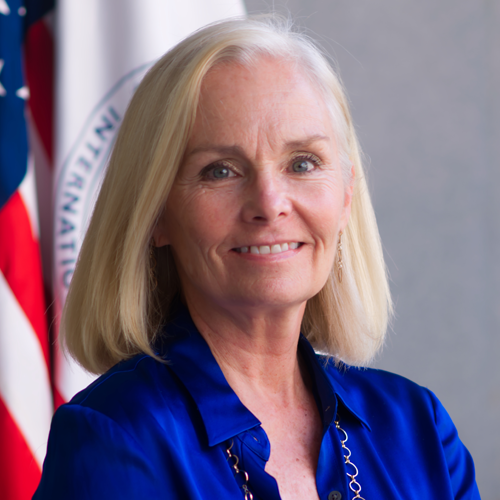The Sharm El Sheikh Guidebook for Just Financing raises the critical question of what stakeholders need to do to translate commitments into implementable projects while capturing opportunities to leverage and catalyze needed finance and investments for climate action.
About the Guidebook
Brings the idea of Justice to Climate Finance
It sets a clear definition for Just Financing along with 12 corresponding guiding principles that serve as a framework to guide stakeholders to adopt innovative climate finance modalities and instruments that can unlock needed scale financing from public and private capital providers for climate action.
Contributes to bridging the information gap
It provides a mapping of climate capital providers based on their access criteria, risk appetite, regional and sectoral focus, ticket size and financing instruments to address the limited access of developing countries to climate funds.
Sets forth key recommendations and an actionable agenda
It outlines the roles each stakeholder can play to achieve just financing outcomes. It presents a realistic and implementable blueprint aimed at maximizing the effectiveness and efficiency of the existing climate finance system in the short-run, while rethinking the international architecture in the medium and long-term.
Key Highlights
Executive Summary
Climate finance has been at the forefront of the global agenda over the past years. Despite the vast amounts of pledges made, and the surging demand for climate finance, pledged global commitments do not make their way to the countries that need them the most. Further, many developing and emerging economies have limited access to long-term financing at scale, not to mention the burdensome cost of capital. Advancing the climate agenda in these countries will, hence, require climate financial flows commensurate to the climate challenge.
The Sharm El-Sheikh Guidebook for Just Financing brings the idea of ‘Justice’ to climate finance with the objective of translating commitments into implementable projects while capturing opportunities to leverage and catalyze needed finance and investments to support the climate agenda, in developing and frontier economies.


Just Financing Definition and Principles
The Guidebook defines Just Financing, as “financing that accounts for historical responsibility for climate change while ensuring equitable access to quality and quantity climate financing that supports resilient development pathways leaving no one behind”. It sets forth 12 core principles clustered under three main themes: Country Ownership, Equitable Pathways to Climate Finance and Governance.
- Recognize, respect, and take concrete action to support developing countries’ Right to Development and Industrialization through equitable pathways.
- Align global climate mitigation and adaptation targets with national development objectives.
- Support and fund the creation of enabling environments, and strengthening of technical capacities that are aligned with climate goals.
- Require strong institutional governance mechanisms at the international and national levels.
- Require robust transparency and accountability mechanisms.
- Is anchored on balanced multi-stakeholder participation and collective agreements that enhance international, regional, and local coordination and commitments.
- Require global stakeholders to actively consider and take progressive action to address historical disparities and responsibilities to meet climate needs.
- Mainstream the concept of Just Financing across all financial stakeholders at national and international levels.
- Ensure the right to quality and quantity climate finance.
- Address access, affordability, and resource allocation bias.
- Promote “Additionality”.
- Address the loss and damage caused by climate change.
Challenges to Investability of Climate Projects
Developing economies present unique opportunities for private investors, yet main challenges remain to be addressed on the macro, sectoral and firm levels. These challenges are mainly related to the supply and demand sides of climate solutions, while others are related to the enabling environment at the country level.
- Impact measurement of investments requires additional technical and financial resources for investors.
- Development risk of a project during the development stages before commercial operations begin.
- Novel technologies present a challenge given the low adoption and high perceived risk of proven and new technologies.
- Ticket size, especially for adaptation projects and in nascent sectors, constitutes a challenge for investors as they struggle to find climate investment opportunities that meet their minimum investment threshold.
- Market size is a considerable challenge as developing economies have smaller addressable markets, and limited perceived potential for climate investment.
- Up-front costs borne by companies include the shift of expense from an operating expense (OpEx) to capital expenditure (CapEx).
- High country risk of developing economies which aggravate the existing challenges, as it is higher than is ideal for many private investors.
- Transaction costs require capital providers to demand a large ticket size for climate projects compared to other investment opportunities, especially in emerging and frontier markets.
- Currency risk is an important challenge, mostly prominent in countries with volatile exchange rates, and in times of economic and market stress.
- Regulatory risk as climate projects face unclear, or conflicting regulations which affect the financial viability of projects and attractiveness for investment.


Innovative Financial Instruments
Innovative finance solutions can unlock existing pools of capital by de-risking mitigation and adaptation projects, whilst safeguarding societies that are most vulnerable to shocks.
- Supports projects with the potential for a commercial revenue model but below-market risk profile.
- Bridges the investment gap by shifting risks, reducing coordination and transaction costs, and enhancing returns.
- Helps deploy concessional climate-related investments more efficiently on the portfolio level and achieves high private investment mobilization.
- Offer projects a potential new revenue stream by placing a monetary value on greenhouse gas emissions.
- Support transitions in hard-to-abate sectors, where reductions remain extremely costly, and can reduce the cost of implementing NDCs by 2030.
- Governments can promote carbon markets through: capacity-building, stronger regulatory systems to shape the voluntary market, new carbon-trading strategies and standardized pricing schemes.
- Monetise economic and financial benefits of enhancing resilience in the form of credit, especially in the agriculture sector, and increase climate flows to adaptation and resilience.
- The transaction process can start from development partners and philanthropies that provide catalytic first loss capital by pooling resources into a facility.
- Requires a well-established regulatory framework to create an enabling environment that attracts the private sector.
A Focus on Africa
Advancing the climate action agenda will require collective action, enhanced coordination and knowledge sharing. To operationalize the proposed solutions of the Guidebook, recommendations have been categorized according to the different groups of stakeholders involved in the climate finance landscape.
- Generate more comprehensive costings of climate change needs.
- Leverage the potential of regional collaboration by the African countries that can use their commonalities in financing needs and complementarities in capacities.
- Identify investment needs for high-risk sectors and regions.
- Generate pipelines of projects for blended finance fit to local contexts, and with different risk/return profiles that meet different investor needs.
- Develop national-level results, M&E systems that incorporate principles of just financing.
- Provide technical assistance & capacity building to enable the identification of funding needs at the national and local levels.
- Generate a sizable impact by shifting out the risk curve, through seeding early-stage and/or greenfield projects to create investable pipelines, providing guarantees and first-loss capital.
- Prioritise allocation of blended grant-based catalytic funding to LMIC, LIC, and SIDS countries in Africa.
- Improving debt sustainability for African countries through promoting countries’ credit ratings and increase private sector confidence in investing in African market.
- Communicate the practical challenges private investors face and the minimum conditions required for investment.
- Private sector provides technical assistance to developing countries to create enabling environments conducive to scaling climate finance.
- Philanthropies unlock private capital by addressing high transaction costs and information asymmetries.
- Philanthropies expand de-risking mechanisms such as first-loss tranches, insurance, hedging, and technical assistance facilities, to catalyze commercial investment.

PARTNERS AND CONTRIBUTORS













Egypt-ICF Roundtable: Sharm El Sheikh Guidebook For Just Financing
Launch of the Sharm ELSheikh Guidebook for Just Financing during COP27
QUOTES
STRUCTURE OF THE GUIDEBOOK
The Guidebook covers a range of topics related to, and in service of, the climate finance ecosystem, with a focus on the immediate and unmet climate finance needs of developing countries and emerging economies. It is composed of six chapters, with each covering an area that is key to advancing the climate action agenda
Chapter 1
The Climate Finance Landscape: Prospects and Opportunities
This chapter brings the idea of “justice” to climate finance as it provides a clear definition of Just Financing and the guiding principles as to what counts as just. It gives an overview of the climate finance landscape to identify key areas for improvement to enhance the effectiveness and efficiency of the existing climate finance system. It highlights the main stakeholders in the current financial system and the potential new players that can play a catalytic role in pushing forward a just finance agenda.
Chapter 2
Creating an Enabling Environment for Climate Investment
This chapter provides guidelines for both Governments and all relevant stakeholders on how to complement each other's efforts to create an enabling environment that can facilitate translating climate commitments into investment action – from addressing regulatory frameworks, institutional arrangements, capacity building needs and creating new markets, to setting clear climate objectives and targets and identifying priority climate sectors, that ultimately support the development of a pipeline of investable projects.
Chapter 3
Enhancing the Investability of Climate Projects
With the aim of providing guidance on how to enhance the investability of climate projects, this chapter addresses key barriers to private investment and possible solutions that can help unlock different sources of financing for climate projects. It summarizes available sources of public and private capital for developing economies, illustrating each stakeholder’s risk-return profiles and appetite, in addition to financial instruments. In the end, it outlines scalable, investable models that developing countries can deploy to crowd in private investments.
Chapter 4
Catalysing Private Capital for Climate Action
This chapter introduces innovative financing modalities that can de-risk investments in developing countries, with a special focus on blended finance to scale-up climate investments through the deployment and mobilization of concessional and non-concessional climate finance. Furthermore, the chapter explores other innovative instruments that monetize mitigation and adaptation outcomes, such as carbon and resilience credits, which can improve profitability and catalyze private capital.
Chapter 5
A Governance Structure for Just Climate Finance
The Chapter underscores the importance of establishing a holistic governance system for just climate finance. Through the identification of the main components, key stakeholders in the climate governance scheme, as well as current gaps, the chapter sets forth practical recommendations for strengthening current governance structures to unlock the potential for climate finance. It also identifies key factors for promoting transparent, comprehensive, and comparable financing flows at the international and country levels.
Chapter 6
Mainstreaming Just Climate Finance in Developing Countries: A Focus on Africa
The sixth and final chapter of the guidebook showcases prospects and opportunities for climate finance in Africa, highlighting the continent’s needs and circumstances. It also presents practical recommendations per stakeholder, namely governments, bilateral and multilateral development partners and funding institutions, private investors and philanthropic institutions to advance the climate action agenda in the continent. Finally, the chapter presents a number of successful case studies spanning across different geographic regions and country income levels. They actively address climate-related challenges and propose solutions in both adaptation and mitigation investments, using blended and non-blended instruments/approaches, which could be replicated in developing and emerging countries.














































